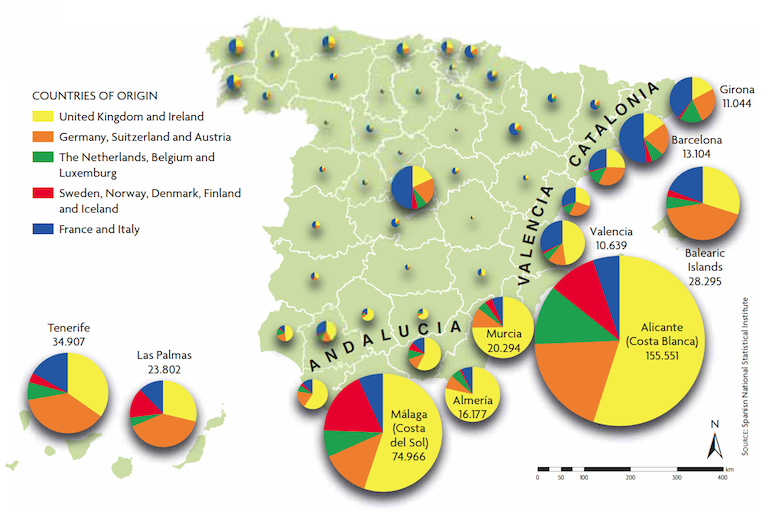The Social Impact of Human Mobility
An undivided vision of cultural and individual change

This article reflects on the social costs and benefits of human migrations, from the viewpoints of both migrating and host populations, and the people that comprise them. We take a two-sided perspective, from the group and the individual, and describe the dynamic process of change, and the cultural and individual changes wrought by acculturation. The text is interspersed with the thoughts expressed by our nomadic society.
Keywords: migration, personality, change, social impact, psychological impact.
SOCIAL CHANGE AND STABILITY
Our society, in general, and the academic community, in particular, must face the challenges posed by the continuous flow and exchange of peoples through our porous borders and ponder on our response to such new and old issues. It is common knowledge that now our young people, whether born here or not, are «the ones to leave» or at least the ones who think of leaving. However, the social imagination – much less flexible than the reality projected by data – is still blaming «the ones who came», without respecting the right to emigrate inherent to human nature: the right of all human beings to survive and to improve their lot.
«The social imagination – much less flexible than the reality projected by data – is still blaming the immigrants»
Perhaps this new dilemma facing immigration (them and us), which has thrived for decades in our country, is nourished by the age-old sedentary versus nomadic quandary and the resulting conflict. Apt reflection should consider to what extent we are both nomadic and sedentary at the same time, or whether we are nomadic by nature. And here other crucial questions arise: To what extent are these dichotomies – sedentary/nomadic; immigrant/native; national/foreign – appropriate in the century of alleged universality and globalisation? Can one move without costs to the «community»? Some reports may shed light on human mobility versus sedentary trends on our planet; indeed, 2011 data provided by the World Bank put an end to the assumption of a one-way South-North migration flow. Although South-North migration was the most important in the last two decades, it now seems to have been overtaken by South-South migration (Table 1).
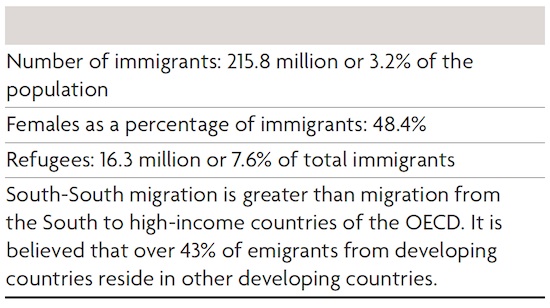
Table 1. Data on immigrants and remittances in 2011. «South» refers to low – and middle – income countries («developing countries») as defined by the World Bank classification of countries. Font: Banc Mundial, 2011
After analysing these figures we could entertain the idea than mankind is «naturally» sedentary and wonder just how statistically «normal» it is to move from one’s place of origin. It seems, however, that not all individuals are sedentary, or at least not during the productive and reproductive stages of their lives. If we assume that societies are made up of groups of individuals who share a culture (understood as cultural products, values, norms and social rules seconded by the group of individuals), to what extent it can be said that societies are mostly sedentary and the cultures they share are immutable? Rather we should think of humans as being nomadic, as societies continuously replenishing individual members, and as cultures in a state of perpetual self-questioning and feedback. To admit that we like stability kills the chance to change perspective. The immovable and deep-rooted provide security. For years, my working hypothesis is based on this assumption, formulated as: «We do not like change» or «Change upsets us».
Prima facie, there are two arguments: one is atavistic and appeals to fear of the unknown while the other, subsumed in this, is the displeasure arising from the implicit loss of self-control (and circumstances). There are also two levels of analysis: the population and the individual. Prejudice can thrive on a need for security and fear of the unknown at the group level, but can also produce side effects at the individual level. So here we will briefly address the effects of change and its possible indicators, at both levels of analysis: the individual and the population. Finally, we will ponder another question, attempting to clarify whether changes at the population level set the basis for individual change, or if individual changes modulate the impact of social ones and whether it is a public or private process. We are aware that there are few studies into the relationships between these two levels and the implications thereof. Therefore we need to gain a better understanding of the links between the psychological and cultural components in the acculturative process of change. As recently stated by Berry et al. (2011), twenty-first-century cross-cultural psychology should make endeavours in this respect.
MIGRATORY impact ON THE PROCESS OF CHANGE
Although Merriam Webster defines the word impact with clearly negative connotations, here it is understood as the effects (both positive and negative) that changes in the cultural environment have on a culture or an individual. However, as always, the question is: how can we measure this impact? A good measure is the relevance of the consequences it produces. Process analysis from the individual to the population level can help us to develop more effective international mobility policies (on a macro-political level), with more suitable national and local intervention policies, as well as useful psychosocial and healthcare approaches. It is vital to involve all these levels of analysis if we want results that ensure both social and individual wellbeing. Hence, both research and intervention call for interdisciplinary dynamics combining the efforts of the academic community.
We start this analytical proposal by attempting to define some parameters that may help to clarify the process. We can consider different variables modulating the intensity of this impact. First, the number of individuals: the size of the group of individuals migrating (whether they leave from or arrive in a community) and the size of the receiving or «host» community will have different consequences in terms of the social changes produced. We believe that the perception of safety and control in decision-making may change depending on relative size, but majorities in numbers do not necessarily hold socio-political power. We refer to the security provided, in general, by belonging to a majority group. This also has clear influences on perceived individual well-being. So if we are to understand the dominant society to be the one comprising the largest number of individuals, by way of example, we might ask the following question. If two hundred immigrants arrived in a provincial town populated by a few native inhabitants (fifty people, mostly elderly), which would the dominant culture be and who would receive the greatest migratory impact. Second, we should consider the impact exposure time: we must consider the length of time the immigrant stays and how long native inhabitants are exposed to contact with other cultures. A stay of a few months does not have the same social and psychological implications as one lasting years. In fact, changes in personality and/or identity of the person exposed to cultural change become more stable and are best measured after three years of intercultural contact (Villarroya, 1993).
«Prejudice can thrive on a need for security and fear of the unknown at the group level»
The third variable would be the transient or permanent effects (generational), to assess the intergenerational differences in the light of migration. That is, if one migrates as a fully enculturated adult or migrates in childhood or adolescence. Special mention is made of those born in a different country to their parents, the so-called second generation, due to the many studies reporting the greater psychological vulnerability of this group. Finally, we consider the geographical, linguistic and cultural distance: the hypothesis is clear: the wider the gap between the origin and host culture, the greater the cultural shock. Here we should consider Hofstede’s five-dimensional model (1978), which helps us to compare cultures: power-distance; individualism/collectivism, masculinity/femininity; uncertainty avoidance; and long/short-term orientation. These dimensions can serve as general guidelines for cultural comparison, understanding that the greater the distance between these variables, the greater the effort required by the cultures in contact, and a greater need for the flexibility of individuals. Of the five dimensions, we consider individualism/collectivism is the most important to assess the impact of acculturative change. It is the closest to the concept of perceived social support and the need (or not) of a closer sense of belonging. That is, it implies differences in how both those migrating and those receiving migrants cope with fear of the unknown and with insecurity, which causes loneliness. This variable was translated to the individual level by Triandis et al. (1985), who proposed the following dichotomy: idiocentric (belonging to individualistic societies) versus allocentric (belonging to collectivist societies). Both approaches emphasise the importance of the group for the individual.
from cultural change to individual change
After summarising the parameters and variables, we will now go on to consider the stability/change process.
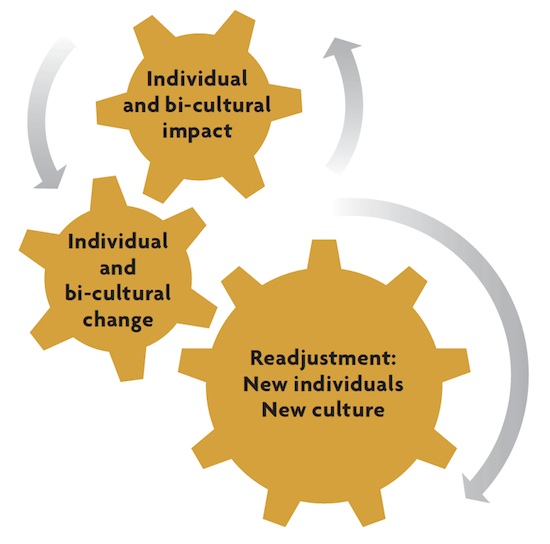
Figure 1. The stability/change of immigrants is dynamic and representative.
As we attempt to show graphically, it is a dynamic and regenerative process. Thus, if we understand culture as a range of «lifestyles shared by a group of people» (Berry et al., 1992) and we take a realistic ontological perspective of culture, then we assume that culture is a concrete reality, which can be observed in the individuals that form part of it. This general assumption leads us to the following reflections, which have given rise to the dynamic model of change: if change takes place in one or more of these ways in a representative number of people, it will shape cultural change. For more collectivist societies, change is assumed by the representative leaders; a particular society or culture maintain and conform the individual by a «balance between the parts», maturing into a harmonious integrated self; even if just one of the parts changes, the balance is upset and this change affects the whole structure; if two or more cultural systems come into contact, they may let go of some non-essential parts that can be dispensed with and/or changed or improved; the balance can be restored if changes do not affect important parts required for identity or an excessive number of changes; ultimately equilibrium is restored by regeneration and return to harmony; consequently, ethnogenesis (emergence of new ethno-cultural groups) occurs, with changes resulting in the individual’s personality.
«From the moment the conflict phase disappears, the process of change becomes very positive for individuals»
This is a process of acculturation, understood as the cultural change that occurs when two or more autonomous cultural systems come into contact. As we have pointed out, the graph shows the process on two levels and with two cultures. Here we understand acculturation as a process of psychological adjustment following three phases (Berry and Kim, 1985): contact (necessary but may be physical or symbolic); conflict (which is inevitable), and adaptation (understood as conflict resolution). It is during these phases of high vulnerability and cultural and psychological reconstruction that fear of the unknown and the need for control have the greatest impact. Thus, depending on the level of fear experienced, there are the following «solutions» for living together as a group: assimilation (policies forcing migrants to conform to the norms and culture of the host country); multiculturalism (policies promoting tolerance of cultural differences of migrants) and interculturalism (policies seeking to build new identities and cultures). Similarly, and in a perfectly linear relationship with fear/respect, on an individual level we can find the following positions: xenophilia (to overestimate – ethnically, culturally, socially and nationally – the value of foreigners); xenophobia (to be negatively biased against foreigners); exophobia (migrants are negatively biased against the host-country society with the consequent formation of ghettos), and endophobia (migrants reject the group they belong to, and passively adapt to the society of the host country). Above we mentioned the change in the individual’s personality, so now below we provide a brief description of what we mean by personality, as depicted in Figure 2.
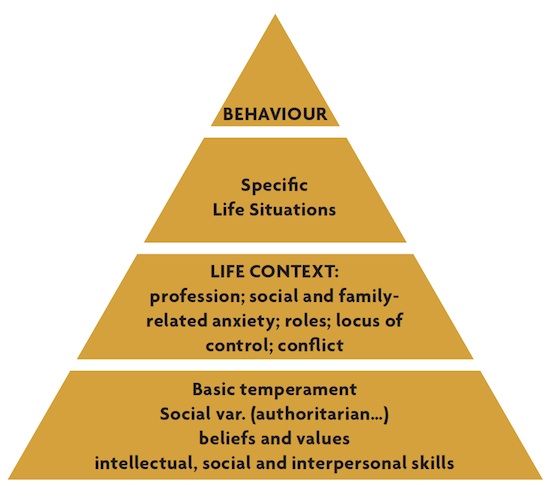
Figure 2. Personality structure of individuals.
We have briefly summarised the structure of personality to show how an individual’s personality is made up in terms of culture, embodied in the habits and patterns of upbringing, which comprise social and interpersonal skills and confer a particular cosmogony generating beliefs and values. To these we must add the attitudinal and temperamental variables, in different life contexts, that determine human behaviour. However, one must ask whether personality can change, which variables change and why, and finally what relationships exist between personality and culture. If, for example, an individual has a conflict between a temperamental variable and a belief in their cultural background, they may feel more at ease in the new culture and change this belief with relative ease. Recent research shows that personality adapts to cultural change. The variables in which changes occur are often chosen to reduce the mismatch caused by the cultural distance. Changes are never random nor do all dimensions of the personality change. In a study comparing Italians and Spaniards (both indigenous and migrant), when Spaniards were immigrants in Italy, they displayed a level of extraversion significantly more similar to the Italians than to the native Spaniards. This was the same with Italians resident in Spain, i.e., they were more similar to native Spaniards (Villarroya, 1993). Therefore, changes take place in those variables that facilitate psychological adjustment, but without losing the sense of identity. The psychological adaptation of individuals is based on this balance and, therefore, of the societies they form. Through this process of reconstruction, a sense of control is recovered and fear of the unknown begins to be replaced, in the best cases, by mutual respect. The next question would be to what extent we are aware of these pledges with diversity.
Effects of change from the perspective of a population or an individual
As mentioned earlier, a research area that requires further investigation (by those working in migration and transcultural psychology) involves the relationships established between the cultural parameters and individual psychological variables. In the absence of this knowledge, we followed the recommendations of Berry et al. (2011) who state that a description and evaluation of the acculturation process and the results thereof should first be studied independently. Thus, adaptation can be largely internal or psychological (a sense of well being, self-esteem) or sociocultural (the union of the individual with others in the new society). We assume that individual and personality variables modulate the effects of the impact on social variables. A social policy cannot succeed if the individuals involved are not prepared to take it on board. And even if they are, there will be marked individual differences in how people experience and interpret the degree and the process of change involved. In this respect, we disagree with Berry when he states that the socio-political and demographic changes form the basis of individual change. Rather, we suggest that consideration should be given to individual change in order to extrapolate the effects of sets of social measures. Thus, our research foundations are flawed if we talk of cultural change at the «group» level and, hence, change that affects individuals likewise. By contrast, we defend the idea that the individual, from personal cosmogony, evaluates and adapts changes to achieve a state of homeostatic equilibrium. Similarities between individuals from the same place of origin (with or without contact with each other) indicate only that upbringing and sociocultural factors coincided before exposure to cultural contact. We have to admit that the group is an imaginary or abstract entity, thus perhaps our analysis should take a different angle and start with the individual, which is a more appreciable microcosm for psychological research. Therefore, analysis should be limited to separate considerations as to the effects of acculturation, but with many opportunities for interaction.
Population level
The consequences of the cultural impact on socio-cultural change are evaluated from two dichotomous axes: group versus individual, and society of origin versus host society (Table 2).
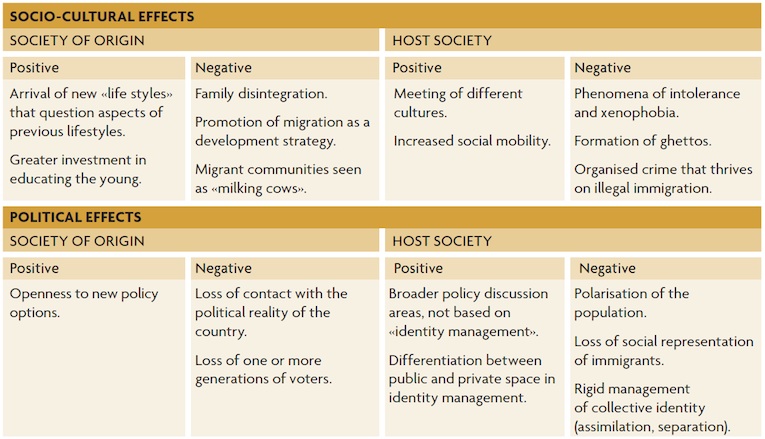
Table 2. Consequences of cultural impact on the societies of origin and arrival. / Elaborat a partir de Baggio, 2010
Individual level
So far, everything discussed is useful for assessing the effects of this dynamic process on the individual. Let us take two basic considerations: individual change is inevitable and will be more or less unpleasant according to the amount of change required and its being imperative that it does not affect the sense of self or identity. Vulnerability is one of the unpleasant effects, entailing negative emotions (fear, anxiety) and the appearance of prejudice, at least when greater emotionality (Table 3) arises.

Table 3. Effects of cultural impact on migrants and indigenous people.
In this respect, Berry and Kim (1985) coined the concept «acculturative stress», defined as the stress caused by specific stressors in the acculturation process. The symptoms are anxiety, depression, psychosomatic symptoms and identity crisis. At this point, we remember that the process of change is inherent to both the immigrants and natives. Besides the above symptoms, the specialised literature reports the following psychological dimensions where acculturative change has been measured: affective changes, specific abilities, values, self-esteem (understood in its emotional aspect), feelings of control and competence, motivational structure, social and family roles, network of friends, ethnic identity and coping strategies. We should recall that these effects may be due to the feeling of a loss of control over life and perceived effectiveness (e.g., the feelings a father experiences when the dominant society questions and censors the values he transmits to his children, making him feel not only threatened and undermined, but less worthy as a father figure). Regarding attribution theory and «learned helplessness», theorists such as Martin Seligman (1975) state that the sustained loss of control over one’s life circumstances leads to symptoms of depression. However we would like to point out that if we add the time factor in the adaptation process, these negative effects become temporary, lasting for around the first three years of permanent settlement (Villarroya, 1993). From the moment the conflict phase disappears, the process of change becomes very positive for individuals. We undertook extensive interviews, and drew the conclusion that people who change culturally gradually become empowered by this change and have a chance to rebuild their personality, becoming more aware of their identity and ability to control their environment (Villarroya, 2007, 2010 ). Remember that all these considerations apply to both the immigrants and the members of the host society.
Baggio, F., 2010. Assessing Impact of Migration on Economic and Social Development, and its Cause-Effect Relationship. Foro Mundial sobre Migración y Desarrollo. Puerto Vallarta, Mexico.
Berry, J. W. and U. Kim, 1985. «Acculturation Attitudes of Korean Immigrants in Toronto». In Lagunes, I. R. and Y. H. Poortinga (eds.). From a Different Perspective: Studies of Behavior across Cultures. Swets & Zeitlinger. Leiden.
Berry, J. W.; Poortinga, Y. H.; Marshall, H. S. and P. R. Dasen, 1992. Cross-cultural Psychology: Research and Applications. Cambridge University Press. Cambridge.
Berry, J. W.; Poortinga, Y. H.; Breugelmans, S. M.; Chasiotis, A. and D. L. Sam, 2011. Cross-cultural Psychology: Research and Applications. Cambridge University Press. Cambridge.
Hofstede, G., 1978. «The Poverty of Management Control Philosophy». The Academy of Management Review, 3(3): 450-461.
Seligman, M. E. P., 1975. Helplessness: On Depression, Development, and Death. W. H. Freeman & Company. New York.
Triandis, H. C.; Leung, K.; Villareal, M. J. and F. I. Clack, 1985. «Allocentric Versus Idiocentric Tendencies: Convergent and Discriminant Validation». Journal of Research in Personality, 19(4): 395-415. DOI: <10.1016/0092-6566(85)90008-X>.
Villarroya, E., 1993. Aspectos psicosociales comprometidos con la adaptación de inmigrantes. PhD Thesis. Universitat de València. Valencia.
Villarroya, E., 2007. Aspectos psicosociales y salud mental en la prostitución femenina: Emigración y prostitución. Ministry for Equality. Madrid.
Villarroya, E., 2010. «Filipino Migrants' Associations in Spain as Potential Agents of Change». In Baggio, F. (ed.). Brick by Brick: Building Cooperation between the Philippines and Overseas Filipinos in Italy and Spain. Scalabrini Migration Center. Quezón City, Philippines.
World Bank, 2011. Migrances and Remittances Factkook 2011. Available at: <www.worldbank.org/migration>.





